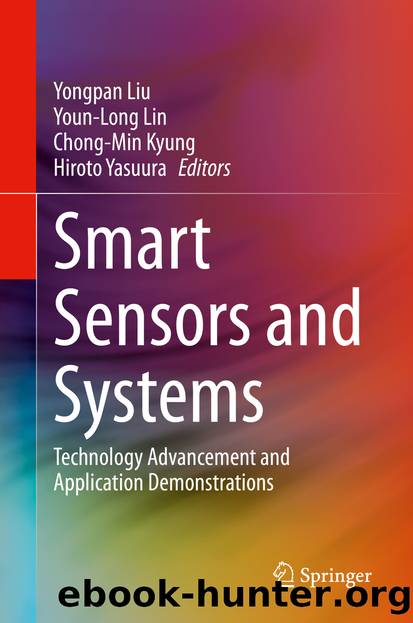Smart Sensors and Systems by Unknown

Author:Unknown
Language: eng
Format: epub
ISBN: 9783030422349
Publisher: Springer International Publishing
3.2 History
The history of vSLAM algorithms is summarized in Table 1, and their relationship is illustrated in Fig. 5. The algorithms are categorized from two aspects: localization and mapping methods, and density of 3D reconstruction. As a framework of the localization and mapping, feature based methods have been proposed since 2003 [6, 18, 31]. In these methods, keypoints are extracted in the images, and used for the localization and mapping. Therefore, objects containing keypoints must exist in the environments. Since the drawback of these methods is that the methods do not work under texture-less environments, direct methods using more pixels in the image, namely feature-less methods because feature points are explicitly not extracted, have been proposed to allow vSLAM to be more robust, as an alternative framework [7, 33]. The density of 3D reconstruction is also an important aspect. Basically, the density of 3D reconstruction in feature based methods can be determined from the number of keypoints extracted in image sequences. Normally, this density is referred to as sparse. On the other hand, the density in direct methods varies according to the methods. For example, the map of the DTAM is highly dense because all of the pixels in the image are used for 3D reconstruction [33]. Then, the density has become more sparse [8, 10].
Fig. 5Classification of vSLAM algorithms. vSLAM algorithms are classified according to localization and mapping methods (direct/feature based), and the density of 3D reconstruction (dense/sparse)
Download
This site does not store any files on its server. We only index and link to content provided by other sites. Please contact the content providers to delete copyright contents if any and email us, we'll remove relevant links or contents immediately.
Hit Refresh by Satya Nadella(9071)
The Compound Effect by Darren Hardy(8864)
Change Your Questions, Change Your Life by Marilee Adams(7672)
Nudge - Improving Decisions about Health, Wealth, and Happiness by Thaler Sunstein(7651)
The Black Swan by Nassim Nicholas Taleb(7046)
Deep Work by Cal Newport(6948)
Rich Dad Poor Dad by Robert T. Kiyosaki(6500)
Daring Greatly by Brene Brown(6468)
Principles: Life and Work by Ray Dalio(6289)
Playing to Win_ How Strategy Really Works by A.G. Lafley & Roger L. Martin(6066)
Man-made Catastrophes and Risk Information Concealment by Dmitry Chernov & Didier Sornette(5946)
Digital Minimalism by Cal Newport;(5694)
Big Magic: Creative Living Beyond Fear by Elizabeth Gilbert(5670)
The Myth of the Strong Leader by Archie Brown(5449)
The Slight Edge by Jeff Olson(5373)
Discipline Equals Freedom by Jocko Willink(5323)
The Motivation Myth by Jeff Haden(5170)
The Laws of Human Nature by Robert Greene(5053)
Stone's Rules by Roger Stone(5046)
